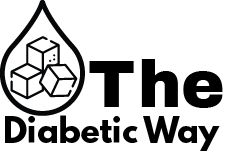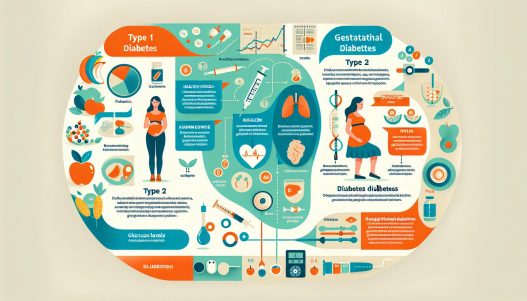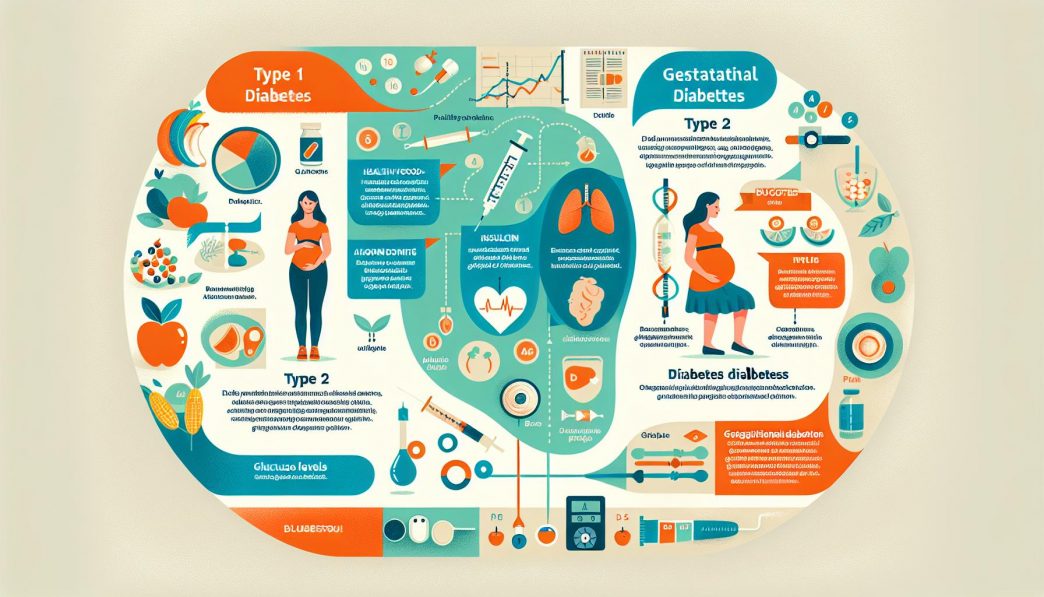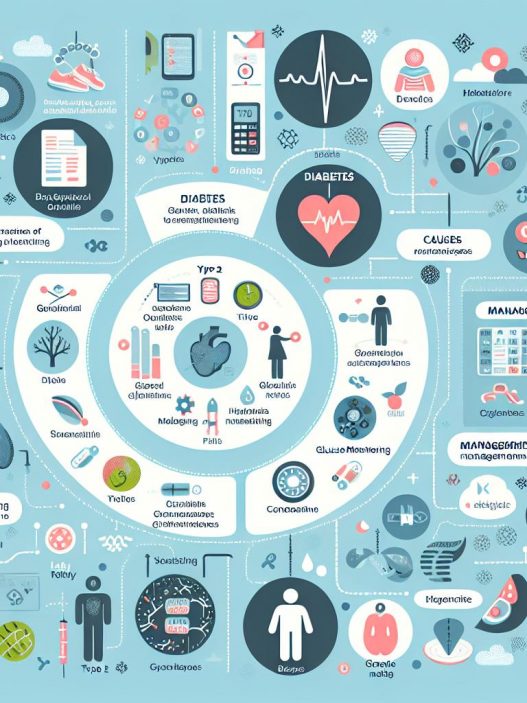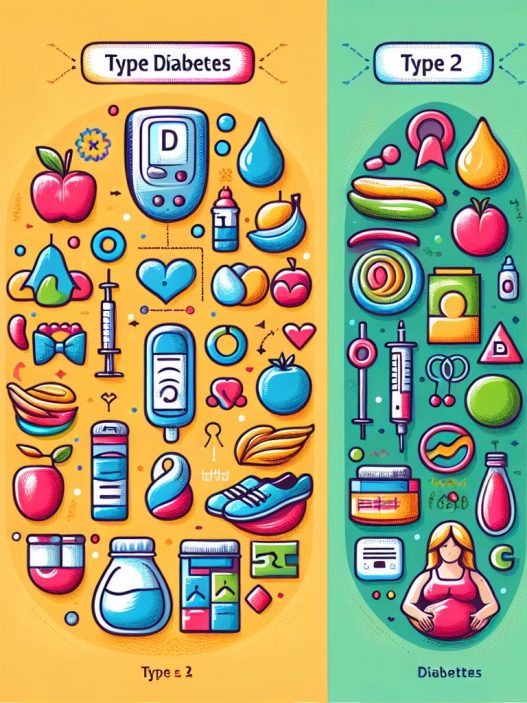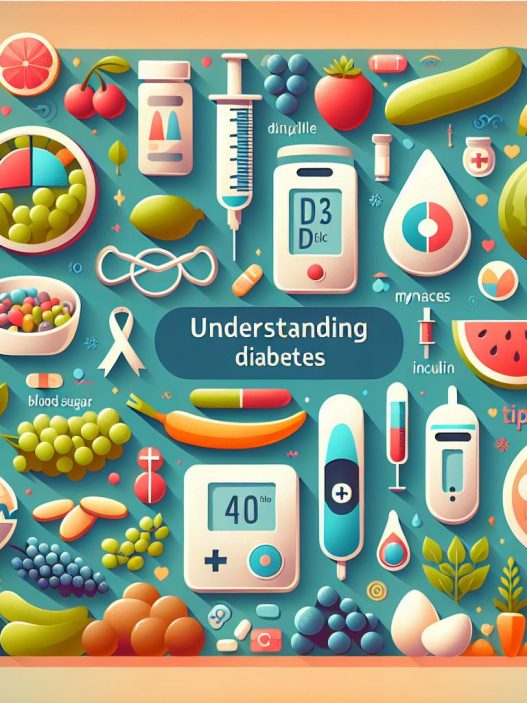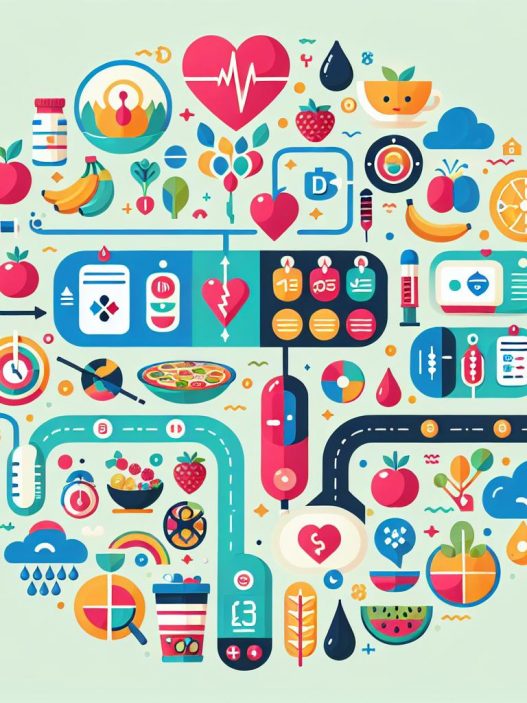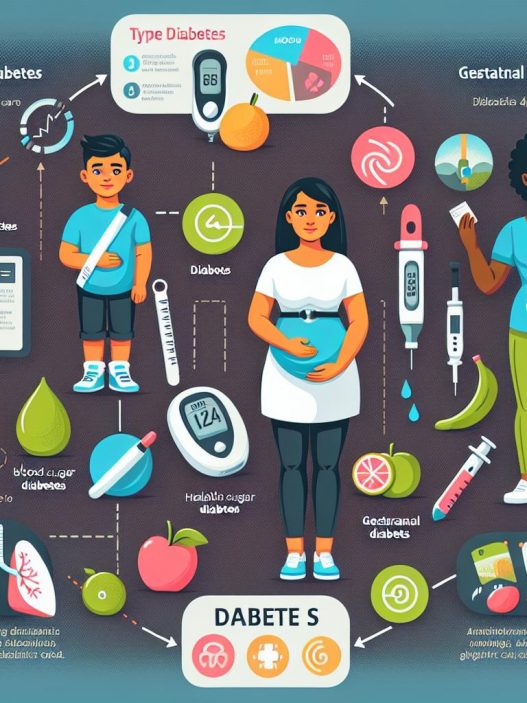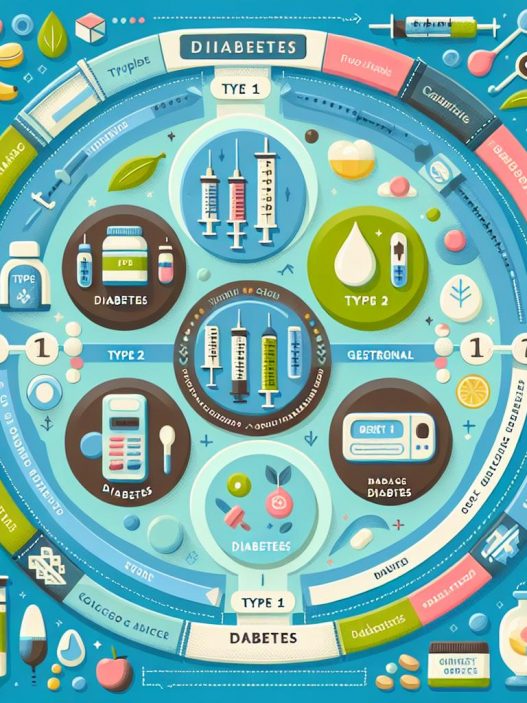# Understanding Diabetes: A Comprehensive Guide to Type 1, Type 2, and Gestational Diabetes
Diabetes is a chronic condition that affects millions of individuals worldwide. Understanding diabetes is essential for managing your health and preventing complications. This comprehensive guide explores the three main types of diabetes: Type 1, Type 2, and Gestational Diabetes, delving into their causes, symptoms, treatments, and lifestyle management strategies. By reading this article, you will gain a deeper understanding of diabetes and how to effectively navigate this condition for a healthier life.
Understanding the Basics of Diabetes: A Unified Overview
Diabetes is a metabolic disorder characterized by high blood sugar (glucose) levels due to either the body’s inability to produce insulin or the cells’ resistance to insulin. Insulin is a hormone secreted by the pancreas that is critical for regulating blood sugar levels. The three primary types of diabetes—Type 1, Type 2, and Gestational Diabetes—have unique characteristics, risk factors, and management strategies.
Type 1 Diabetes is an autoimmune condition where the pancreas produces little to no insulin. It typically manifests in childhood or adolescence, but it can occur at any age. On the other hand, Type 2 Diabetes is primarily associated with insulin resistance and is closely tied to obesity and lifestyle factors. This type is most commonly diagnosed in adulthood but increasingly affects younger populations. Lastly, Gestational Diabetes occurs during pregnancy, affecting how your cells use sugar. Understanding these conditions is crucial for effective management and prevention of complications.
Type 1 Diabetes: Causes, Symptoms, and Treatment Options
What is Type 1 Diabetes?
Type 1 Diabetes (T1D) is a serious, lifelong autoimmune disease. It occurs when the immune system mistakenly attacks and destroys insulin-producing beta cells in the pancreas. This results in an absolute insulin deficiency, forcing individuals to rely on external insulin sources for their survival. Researchers believe that genetic predisposition and environmental factors, such as viral infections, contribute to the onset of T1D.
The onset of T1D is usually rapid and can be severe. Common symptoms include increased thirst, frequent urination, weight loss, fatigue, and blurred vision. If left untreated, individuals may experience diabetic ketoacidosis, a life-threatening condition resulting from the body burning fat instead of glucose for energy due to low insulin levels.
Differences Between Type 1 and Type 2 Diabetes
The primary distinction between Type 1 and Type 2 Diabetes lies in their cause and progression. While T1D is an autoimmune disorder characterized by a lack of insulin production, Type 2 Diabetes (T2D) occurs mainly due to insulin resistance, where the body’s cells do not respond effectively to insulin. This difference in pathology is essential for determining appropriate treatment and management strategies. Unlike T1D, which requires lifelong insulin therapy, T2D can sometimes be managed through lifestyle changes, oral medications, or, in more advanced cases, insulin therapy.
Another significant difference is the age of onset. Type 1 Diabetes typically develops during childhood or adolescence, while Type 2 Diabetes is often diagnosed in adults and increasingly in children, primarily due to rising obesity rates and sedentary lifestyles. Recognizing these differences helps in understanding the diverse challenges faced by individuals with each type of diabetes.
Management and Treatment of Type 1 Diabetes
Managing Type 1 Diabetes involves a comprehensive approach characterized by a balance of insulin administration, blood glucose monitoring, dietary considerations, and physical activity. Individuals often require multiple daily insulin injections or an insulin pump for constant insulin delivery. Continuous glucose monitoring (CGM) is another vital tool that allows real-time tracking of blood sugar levels, helping to prevent both hyperglycemia and hypoglycemia.
Nutritional management is equally crucial. Individuals should work with registered dietitians to plan balanced meals containing carbohydrates, proteins, and fats, which can help achieve optimal blood glucose control. Learning to count carbohydrates and understanding how different foods impact blood sugar levels is essential for effective management.
Physical activity is also an integral aspect of diabetes care. Regular exercise helps to improve insulin sensitivity, boost glucose uptake by cells, and promote overall health. However, individuals with T1D must take particular care to monitor their blood sugar levels before, during, and after exercise to avoid dangerous fluctuations.
Type 2 Diabetes: Risk Factors, Symptoms, and Lifestyle Management
What is Type 2 Diabetes?
Type 2 Diabetes (T2D) is a chronic condition that affects how the body metabolizes glucose. Unlike Type 1, where there’s no insulin production, Type 2 Diabetes generally starts with insulin resistance, where the body does not use insulin effectively. Over time, the pancreas cannot keep up with the increased demand for insulin, leading to elevated blood sugar levels.
T2D commonly develops in adults but is increasingly diagnosed in children and adolescents due to rising obesity rates. Risk factors include being overweight, having a sedentary lifestyle, advancing age, a family history of diabetes, and certain ethnic backgrounds.
Recognizing the Symptoms of Type 2 Diabetes
The symptoms of Type 2 Diabetes may develop gradually and can sometimes go unnoticed. Some common signs include excessive thirst, frequent urination, increased hunger, fatigue, blurred vision, and slow-healing sores or infections. Many individuals may also experience darkened skin in the folds and creases of the body, known as acanthosis nigricans. Regular check-ups and screenings are important for early detection, especially for those with risk factors.
Moreover, if left unmanaged, Type 2 Diabetes can lead to serious health complications, including cardiovascular disease, kidney damage, neuropathy, and vision problems. Therefore, understanding the symptoms and promptly addressing them is critical for preventing complications.
Lifestyle Modifications for Managing Type 2 Diabetes
Lifestyle changes are fundamental in managing Type 2 Diabetes effectively. A diet rich in whole grains, fruits, vegetables, lean proteins, and healthy fats can help manage blood sugar levels. Portion control and meal timing can also play a crucial role in preventing spikes in blood sugar. Additionally, reducing intake of sugary foods and refined carbohydrates is essential.
Regular physical activity is equally vital. Aim for at least 150 minutes of moderate aerobic exercise each week, combined with strength resistance training on two or more days a week. Physical activity helps improve insulin sensitivity and glucose metabolism, reducing overall blood sugar levels.
Furthermore, weight loss can significantly improve insulin sensitivity and control blood sugar levels. Even a modest weight loss of 5-10% of body weight can have profound effects on health and diabetes management. Collaborating with healthcare providers to set achievable goals and develop personalized plans is crucial for success.
Gestational Diabetes: Understanding Causes, Effects, and Management
What is Gestational Diabetes?
Gestational Diabetes occurs during pregnancy when the body cannot produce enough insulin to meet the increased needs of both the mother and the growing fetus. This form of diabetes typically develops around the 24th week of pregnancy and resolves after childbirth. However, it can lead to complications for both the mother and the baby if not properly managed.
Risk factors for gestational diabetes include obesity, a sedentary lifestyle, a history of gestational diabetes in previous pregnancies, having given birth to a baby weighing 9 pounds or more, advanced maternal age, and certain ethnic backgrounds. Regular screenings during pregnancy help in identifying this condition early.
The Impact of Gestational Diabetes on Mother and Baby
Gestational diabetes can lead to several complications. For the mother, it increases the risk of high blood pressure, preeclampsia, and the likelihood of developing Type 2 Diabetes later in life. For the baby, it can result in excessive growth, leading to complications during delivery, as well as a higher risk of neonatal hypoglycemia (low blood sugar) immediately after birth.
Long-term implications include increased risks for both mother and child developing Type 2 Diabetes later in life. This intergenerational aspect underscores the importance of effective management during pregnancy to safeguard both the mother’s and baby’s health.
Managing Gestational Diabetes: Diet, Exercise, and Monitoring
Managing gestational diabetes focuses on maintaining normal blood sugar levels through dietary changes, physical activity, and monitoring. A balanced meal plan rich in complex carbohydrates, lean proteins, and healthy fats is vital, along with limiting refined sugars and processed foods. Working closely with a registered dietitian can help expectant mothers develop sustainable meal plans.
Physical activity is safe for most pregnant women and can significantly help control blood sugar levels. Walking, swimming, and prenatal yoga are excellent options, but it’s important to consult healthcare providers before starting any new exercise regime during pregnancy.
Glucose monitoring is crucial. Regular checks allow expectant mothers to identify blood sugar spikes and make timely adjustments. In some cases, insulin therapy may be required if dietary and lifestyle changes aren’t enough to maintain normal glucose levels.
Long-term Diabetes Management: Strategies for a Healthier Future
Regular Monitoring and Medical Care
Regardless of the type of diabetes, regular monitoring is essential to maintaining health and preventing complications. Individuals with diabetes should have routine check-ups with their healthcare providers, including endocrinologists and dietitians, to assess their condition, adjust treatment plans and monitor for potential complications linked to diabetes.
Self-monitoring of blood glucose levels is an indispensable part of diabetes management. For those with Type 1 and Type 2 diabetes, frequent feedback about blood sugar levels can aid in making real-time adjustments to diet and insulin dosage. Continuous Glucose Monitors (CGMs) are also becoming increasingly popular, providing real-time glucose readings via an under-skin sensor.
Additionally, diabetes management involves regular laboratory tests, such as HbA1c (glycated hemoglobin) tests, comprehensive metabolic panels, and screenings for diabetes-related complications, including eye examinations, kidney function tests, and foot examinations. Early detection of potential issues is key to effective intervention.
Emotional and Psychological Support
Living with diabetes can be overwhelming and stressful. Emotional and psychological support is critical to managing this chronic condition effectively. Feelings of frustration, anxiety, or depression may arise at different stages of managing diabetes, impacting overall wellbeing and disease control.
Support groups, therapy, and counseling can provide much-needed relief and coping strategies for individuals facing diabetes-related challenges. Building a strong support network of family, friends, healthcare providers, and fellow diabetes patients can alleviate feelings of isolation and improve emotional health.
Self-management education, including Diabetes Self-Management Education and Support (DSMES), is vital for empowering individuals with the knowledge and skills needed to manage their condition confidently. Better understanding diabetes helps individuals take charge of their health and make informed lifestyle decisions.
Exploring Innovative Technologies in Diabetes Management
Technological advancements have transformed diabetes management, making it easier for individuals to take control of their condition. Innovations such as insulin pumps, continuous glucose monitoring systems, and smartphone applications help patients log their meals, track their physical activity, and monitor their glucose levels in real-time.
Insulin delivery devices have become increasingly sophisticated, providing automated dosing based on glucose levels. Some systems even use algorithms to predict blood sugar levels and adjust insulin delivery accordingly. Personalization of diabetes management through technology enables individuals to manage their condition more effectively and with less intrusive monitoring.
Additionally, telehealth platforms have expanded access to healthcare professionals, allowing individuals to receive support and medical advice from the comfort and safety of their homes. Virtual consultations enhance ongoing healthcare management, especially for those living in underserved areas or with limited mobility.
In conclusion, understanding diabetes provides valuable insights into managing this chronic condition effectively. With Type 1, Type 2, and Gestational Diabetes, each type warrants unique considerations, strategies, and support systems. Lifelong management includes a combination of lifestyle modifications, regular monitoring, emotional support, and leveraging technological advancements. By prioritizing education and equipped with the right tools, individuals with diabetes can thrive and lead fulfilling lives despite their diagnosis.
